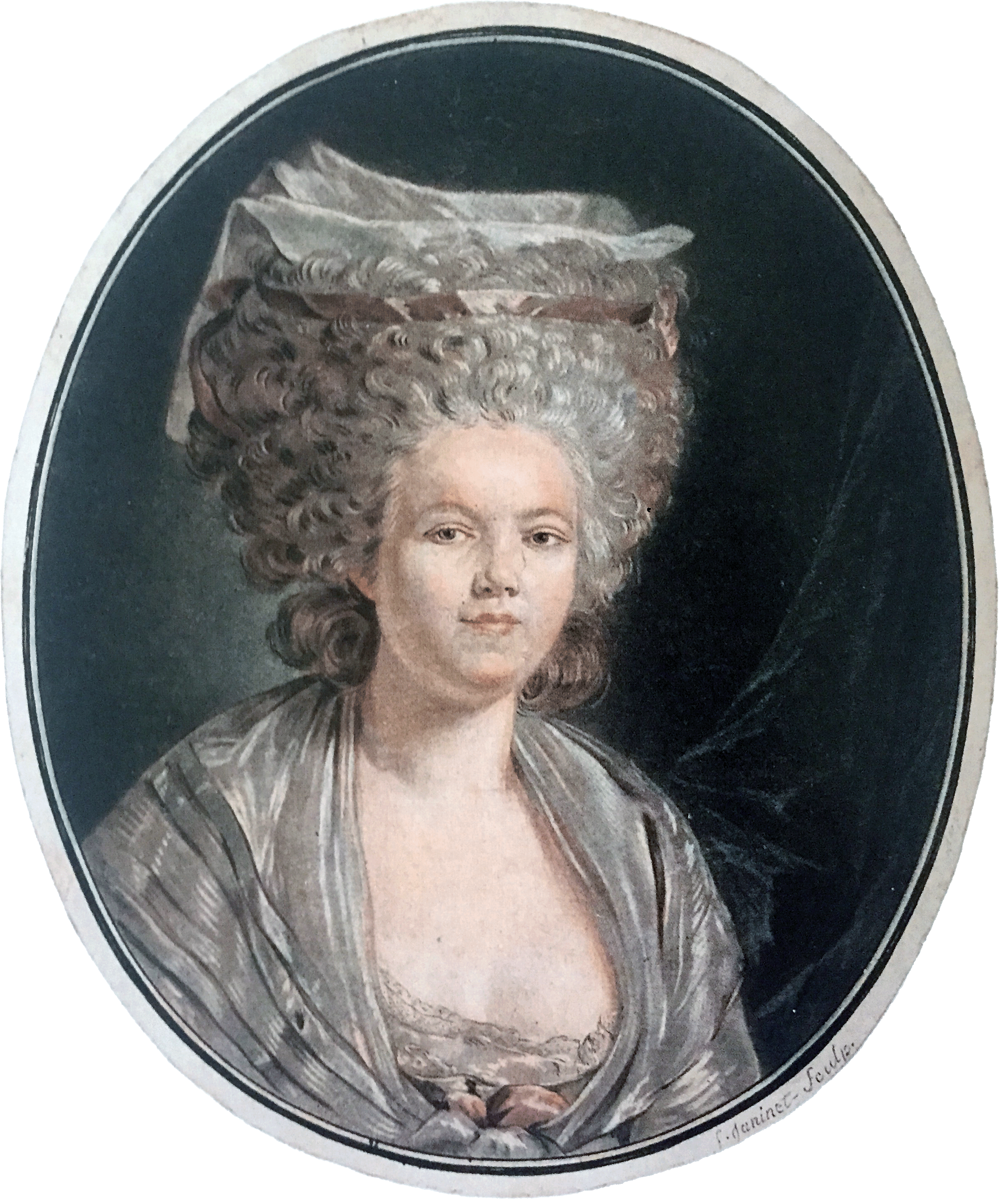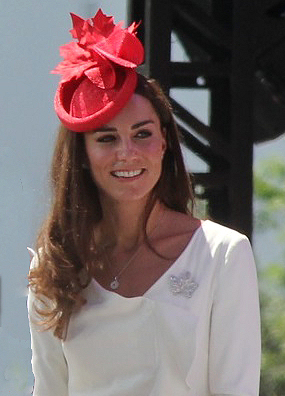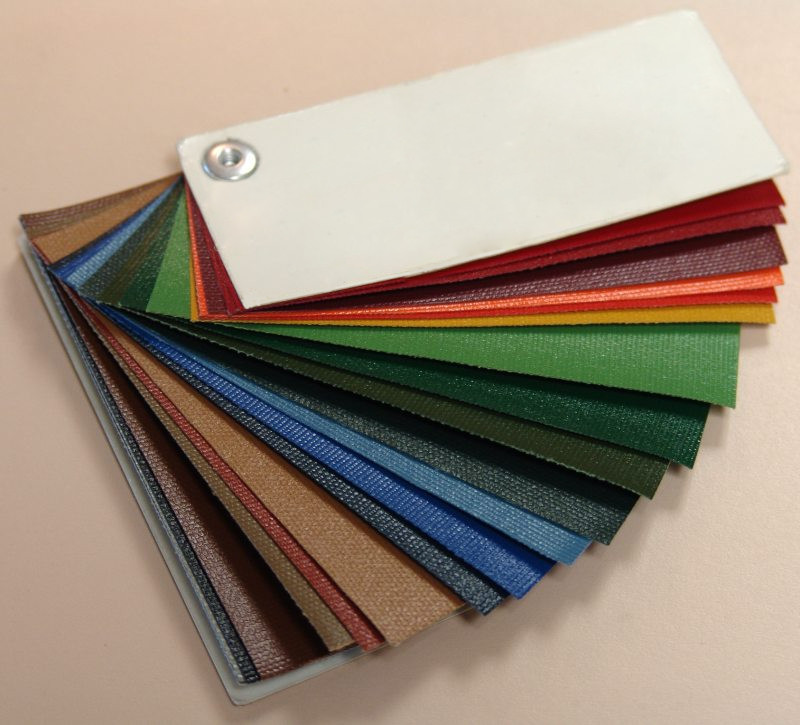|
Hatmaking
Hat-making or millinery is the design, manufacture and sale of hats and other headwear. A person engaged in this trade is called a milliner or hatter. Historically, milliners, typically women shopkeepers, produced or imported an inventory of garments for men, women, and children and sold these garments in their millinery shop. Many milliners worked as both milliner and fashion designer, such as Rose Bertin, Jeanne Lanvin, and Coco Chanel. The millinery industry benefited from industrialization during the nineteenth century. In 1889 in London and Paris, over 8,000 women were employed in millinery, and in 1900 in New York, some 83,000 people, mostly women, were employed in millinery. Though the improvements in technology provided benefits to milliners and the whole industry, essential skills, craftsmanship, and creativity are still required. Since the mass-manufacturing of hats began, the term milliner is usually used to describe a person who applies traditional hand-craftsma ... [...More Info...] [...Related Items...] OR: [Wikipedia] [Google] [Baidu] |
Vanilla Beane
Vanilla Powell Beane (born Vanilla Powell; September 13, 1919 – October 23, 2022), known as "DC's Hat Lady", was an American milliner and business woman. One of her hats was displayed and is in the collection of the National Museum of African American History and Culture (NMAAHC). In Washington, D.C., there is a Vanilla Beane Day on September 13. Early life Beane was born in Wilson, North Carolina, on September 13, 1919, to Martha Hagans Powell and James Powell, the sixth of seven children. She worked on local farms, including tobacco and cotton and attended a single room school in Nash County, North Carolina. She graduated from Charles H. Darden High School in 1940, but as part of the class of 1938. Career Beane moved to Washington, D.C. in the 1940s to follow her two sisters since there were more jobs available there. She married her husband Willie George Beane in 1942, which she remarked on, at 99 years old, "I married a fellow, Willie Beane, and by my named 'sic''be ... [...More Info...] [...Related Items...] OR: [Wikipedia] [Google] [Baidu] |
Hat Block
A hat block, also known as a hat form or bashing block, is a wooden block carved into the shape of a hat by a craftsman known as a block shaper. It is used by hat makers and milliners to produce a hat. Today there are only a handful of block shapers left. In the United Kingdom, hat block making has been listed as an endangered craft by the Heritage Crafts Association The Heritage Crafts Association is a registered United Kingdom charity set up to support and promote traditional crafts. Since October 2021 it has been operating under the name Heritage Crafts. The charity was launched at the Victoria & Albert Mu ..., with three remaining hat block making businesses still in operation as of 2022. References Hatmaking Woodcarving {{Art-technique-stub ... [...More Info...] [...Related Items...] OR: [Wikipedia] [Google] [Baidu] |
John Cavanagh (hatter)
John J. Cavanagh (January 16, 1864 – January 24, 1957) was an American gentleman's hatter based in New York City. He was a Democratic mayor of South Norwalk and of Norwalk, Connecticut. He was a leader in both styling and manufacturing of hats for fifty years. Political career In 1902, Cavanagh was elected mayor of South Norwalk and in 1908, he was elected mayor of Norwalk. He is the only person to have served as mayors of both cities prior to their consolidation in 1913. He was very active in Democratic Party politics, and in 1925 was considered for the candidacy for governor of Connecticut. However, he was unwilling, due to his business responsibilities. He was a founder of the Norwalk Hospital, and was a member of its board of trustees for 20 years. He was a founder of the Shorehaven Golf Club, a member of the Merritt Parkway Commission, the Norwalk Housing Authority, the Norwalk Kiwanis Club, and the State Prison Board. Hat manufacturing business Cavanagh went ... [...More Info...] [...Related Items...] OR: [Wikipedia] [Google] [Baidu] |
Millinery Deaprtment, Second Floor, Summit St
Hat-making or millinery is the design, manufacture and sale of hats and other headwear. A person engaged in this trade is called a milliner or hatter. Historically, milliners, typically women shopkeepers, produced or imported an inventory of garments for men, women, and children and sold these garments in their millinery shop. Many milliners worked as both milliner and fashion designer, such as Rose Bertin, Jeanne Lanvin, and Coco Chanel. The millinery industry benefited from industrialization during the nineteenth century. In 1889 in London and Paris, over 8,000 women were employed in millinery, and in 1900 in New York, some 83,000 people, mostly women, were employed in millinery. Though the improvements in technology provided benefits to milliners and the whole industry, essential skills, craftsmanship, and creativity are still required. Since the mass-manufacturing of hats began, the term milliner is usually used to describe a person who applies traditional hand-craftsmanshi ... [...More Info...] [...Related Items...] OR: [Wikipedia] [Google] [Baidu] |
Rose Bertin
Marie-Jeanne Rose Bertin (2 July 1747, Abbeville, Picardy, France – 22 September 1813, Épinay-sur-Seine) was a French milliner ('' Marchande de modes''), known as the dressmaker to Queen Marie Antoinette. She was the first celebrated French fashion designer and is widely credited with having brought fashion and ''haute couture'' to the forefront of popular culture. Biography Rose Bertin was the daughter of Nicolas Bertin (d. 1754) and Marie-Marguerite Méquignon, and spent her childhood in St Gilles in Picardie. She came from a family of small means; her mother worked as a sick nurse, which at the time was a profession with very low salary and status, and the financial situation became even worse after the death of her father.Langlade, Émile. Rose Bertin: Creator of Fashion at the Court of Marie Antoinette (London: John Long, 1913). She and her brother Jean-Laurent received a modest education, but had a high level of ambition. Early career At the age of sixteen, Rose B ... [...More Info...] [...Related Items...] OR: [Wikipedia] [Google] [Baidu] |
Jeanne Lanvin
Jeanne-Marie Lanvin (; 1 January 1867 – 6 July 1946) was a French haute couture fashion designer. She founded the Lanvin fashion house and the beauty and perfume company Lanvin Parfums. Early life Jeanne Lanvin was born in Paris on 1 January 1867, the eldest of 11 children of Constantin Lanvin and Sophie Deshayes. She became an apprentice milliner at Madame Félix in Paris at the age of 16. She trained with Suzanne Talbot and Caroline Montagne Roux before becoming a milliner on the rue du Faubourg Saint-Honoré in 1889. Career In 1909, Lanvin joined the '' Syndicat de la Couture'' ( fr), which marked her formal status as a couturière. The clothing Lanvin made for her daughter began to attract the attention of a number of wealthy people who requested copies for their own children. Soon, Lanvin was making dresses for their mothers, and some of the most famous names in Europe were included in the clientele of her new boutique on the rue du Faubourg Saint-Honoré, Paris ... [...More Info...] [...Related Items...] OR: [Wikipedia] [Google] [Baidu] |
Coco Chanel
Gabrielle Bonheur "Coco" Chanel ( , ; 19 August 1883 – 10 January 1971) was a French fashion designer and businesswoman. The founder and namesake of the Chanel brand, she was credited in the post-World War I era with popularizing a sporty, casual chic as the feminine standard of style. This replaced the "corseted silhouette" that was dominant beforehand with a style that was simpler, far less time consuming to put on and remove, more comfortable, and less expensive, all without sacrificing elegance. She is the only fashion designer listed on ''Time (magazine), Time'' magazine's Time 100: The Most Important People of the Century, list of the 100 most influential people of the 20th century. A prolific fashion creator, Chanel extended her influence beyond Haute couture, couture clothing, realizing her aesthetic design in jewellery, handbags, and fragrance. Her signature scent, Chanel No. 5, has become an iconic product, and Chanel herself designed her famed interlocked-CC monogra ... [...More Info...] [...Related Items...] OR: [Wikipedia] [Google] [Baidu] |
Fascinator
A fascinator is a formal headpiece, a style of millinery. Since the 1990s, the term has referred to a type of formal headwear worn as an alternative to the hat; it is usually a large decorative design attached to a band or clip. In contrast to a hat, its function is purely ornamental: it covers very little of the head, and offers little or no protection from the weather. An intermediate form, incorporating a more substantial base to resemble a hat, is sometimes called a hatinator. Etymology The word "fascinator" is derived from the Latin verb ''fascinare'' ("to fascinate"), and simply means a thing or person that is enthralling or extremely interesting. Historically, the term was also applied to a person or animal with the (perhaps magical) power of rendering others unable to move or escape. History Earlier decorative headpieces It was customary for Christian women in Europe to wear some sort of headcovering. The European fashion of decorating the head with a hat can be ... [...More Info...] [...Related Items...] OR: [Wikipedia] [Google] [Baidu] |
Buckram
Buckram is a stiff cotton (occasionally linen or horse hair) cloth with a loose weave, often muslin. The fabric is soaked in a sizing agent such as wheat-starch paste, glue (such as PVA glue), or pyroxylin (gelatinized nitrocellulose, developed around 1910), then dried. When rewetted or warmed, it can be shaped to create durable firm fabric for book covers, hats, and elements of clothing. In the Middle Ages, "bokeram" (as the word was sometimes spelt in Middle English) designated a fine cotton cloth, not stiff. The etymology of the term remains uncertain; the ''Oxford English Dictionary'' calls into question the commonly-mentioned derivation from the name of the city of Bokhara. Use in bookbinding In bookbinding Bookbinding is the process of physically assembling a book of codex format from an ordered stack of ''signatures'', sheets of paper folded together into sections that are bound, along one edge, with a thick needle and strong thread. Cheaper, b ..., buckram ... [...More Info...] [...Related Items...] OR: [Wikipedia] [Google] [Baidu] |
International Hat Company
International Hat Company, formerly named the International Harvest Hat Company, was a St. Louis, Missouri-based manufacturer of commercial hats and military helmets. The company was one of the largest hat manufacturers in the United States and, at one time, the largest manufacturer of harvest hats in the world. It is best remembered for its design and mass production of tropical shaped, pressed fiber military sun helmets for service members of the United States Army, Marines, and Navy during and after World War II. Additionally, the American owned company was a major producer of harvest hats, straw hats, fiber sun hats, enameled dress hats, baseball caps, and earmuffs throughout most of the 20th century. However, it is the International Hat military sun helmets that have become the most notable collector's items. Established in 1917 as a private corporation, the company began with a single product line of harvest straw hats. By the late 1930s, the company had expanded i ... [...More Info...] [...Related Items...] OR: [Wikipedia] [Google] [Baidu] |
Cowboy Hat
The cowboy hat is a high-crowned, wide-brimmed hat best known as the defining piece of attire for the North American cowboy. Today it is worn by many people, and is particularly associated with ranch workers in the western and southern United States, western Canada and northern Mexico, with many country, regional Mexican and sertanejo music performers, and with participants in the North American rodeo circuit. It is recognized around the world as part of Old West apparel. The cowboy hat as known today has many antecedents to its design, including Mexican hats such as the sombrero, the various designs of wide-brimmed hat worn by farmers and stockmen in the eastern United States, as well as the designs used by the United States Cavalry. The first western model was the open-crowned " Boss of the Plains", and after that came the front-creased Carlsbad, destined to become "the" cowboy style.Foster-Harris, p. 106. The high-crowned, wide-brimmed, soft-felt western hats that ... [...More Info...] [...Related Items...] OR: [Wikipedia] [Google] [Baidu] |
Borsalino
Borsalino is the oldest Italian company specializing in the manufacture of luxury hats. Since 1857, the manufacture has been based in Alessandria, Piedmont. The founder, Giuseppe Borsalino, is remembered for creating a particular model of felt hat characterized by the registered trademark Borsalino. History On 4 April 1857, Giuseppe Borsalino started a workshop in Alessandria that specialized in the production of felt hats. The workshop eventually grew to industrial production, and in 1888 the company moved to a new factory designed by Arnaldo Gardella, located on Corso Cento Cannoni, Alessandria. In these years Borsalino produced 2,500 hats a day, but when the company won the Grand Prix, an important quality certificate, at the Paris Exposition Universelle in 1900, spread the brand's fame globally. The succession of Giuseppe Borsalino was complicated: the designated heir, Teresio Borsalino, was opposed to his cousin Giovanni Borsalino, son of Lazzaro, who inaugurated a new hat ... [...More Info...] [...Related Items...] OR: [Wikipedia] [Google] [Baidu] |







